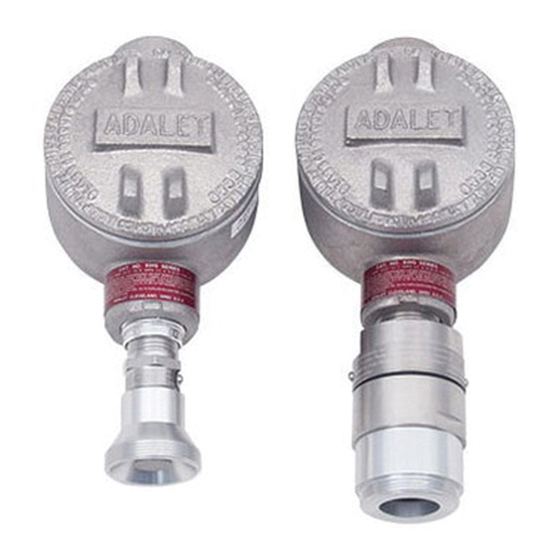Table of Contents
Advertisement
Quick Links
Advertisement
Table of Contents

Summary of Contents for RKI Instruments 65-2428
- Page 1 Artisan Technology Group is your source for quality new and certified-used/pre-owned equipment SERVICE CENTER REPAIRS WE BUY USED EQUIPMENT • FAST SHIPPING AND DELIVERY Experienced engineers and technicians on staff Sell your excess, underutilized, and idle used equipment at our full-service, in-house repair center We also offer credit for buy-backs and trade-ins •...
- Page 2 65-2428 Hydrogen Sulfide Detector Operator’s Manual Part Number: 71-0344 Revision: P1 Released: 10/20/14 www.rkiinstruments.com Artisan Technology Group - Quality Instrumentation ... Guaranteed | (888) 88-SOURCE | www.artisantg.com...
- Page 3 Typical calibration frequencies for most applications are between 3 and 6 months, but can be required more often or less often based on your usage. 65-2428 H S Detector Artisan Technology Group - Quality Instrumentation ... Guaranteed | (888) 88-SOURCE | www.artisantg.com...
- Page 4 Product Warranty RKI Instruments, Inc. warrants gas alarm equipment sold by us to be free from defects in materials, workmanship, and performance for a period of one year from date of shipment from RKI Instruments, Inc. Any parts found defective within that period will be repaired or replaced, at our option, free of charge.
-
Page 5: Table Of Contents
Parts List ..............12 65-2428 H S Detector Artisan Technology Group - Quality Instrumentation ... -
Page 6: Overview
NOTE: The following symbol on the detector label is a caution to the user to refer to this documentation for installation and operation instructions: WARNING: When using the 65-2428, you must follow the instructions and warnings in this manual to assure proper and safe operation of the 65-2428 and to minimize the risk of personal injury. -
Page 7: Description
The sensor is secured within the sensor housing by four pins. Through a series of chemical and electrical reactions, the sensor produces an electrical output that is proportional to the detection range of the detector. 2 • 65-2428 H S Detector Artisan Technology Group - Quality Instrumentation ... Guaranteed | (888) 88-SOURCE | www.artisantg.com... -
Page 8: Installation
2.25 Ref 3/4 NPT 0.75 3.48 1.62 Flats for Wrench Ø 1.75 1-1/2-20 For Calibration Cup Figure 2: Outline & Mounting Dimensions 65-2428 H S Detector • 3 Artisan Technology Group - Quality Instrumentation ... Guaranteed | (888) 88-SOURCE | www.artisantg.com... -
Page 9: Wiring The H 2 S Detector To A Controller
CAUTION: Do not route power and detector wiring through the same conduit hub. The power cable may disrupt the transmission of the detector signal to the controller. 4 • 65-2428 H S Detector Artisan Technology Group - Quality Instrumentation ... Guaranteed | (888) 88-SOURCE | www.artisantg.com... - Page 10 RKI controllers typically have a ground stud that can be used to ground the cable’s drain wire. 11. Reinstall the junction box cover. 65-2428 H S Detector • 5 Artisan Technology Group - Quality Instrumentation ... Guaranteed | (888) 88-SOURCE | www.artisantg.com...
-
Page 11: Startup
If the display reading is not 0 ppm H S, continue with step 3. Perform a zeroing operation at the controller. See the controller operator’s manual for directions. 6 • 65-2428 H S Detector Artisan Technology Group - Quality Instrumentation ... Guaranteed | (888) 88-SOURCE | www.artisantg.com... -
Page 12: Maintenance
Unscrew the calibration cup from the H S detector. When the controller display reading falls below the alarm setpoints, return the controller to normal operation. 65-2428 H S Detector • 7 Artisan Technology Group - Quality Instrumentation ... Guaranteed | (888) 88-SOURCE | www.artisantg.com... -
Page 13: Troubleshooting
Verify that the calibration cylinder contains an adequate supply of a fresh test sample. If the calibration/response difficulties continue, replace the H S sensor as described later in this section. If the calibration/response difficulties continue, contact RKI Instruments, Inc. for further instruction. 8 • 65-2428 H S Detector... -
Page 14: Replacing Components Of The H 2 S Detector
Note the position of the color-coded leads as you remove them. 65-2428 H S Detector • 9 Artisan Technology Group - Quality Instrumentation ... Guaranteed | (888) 88-SOURCE | www.artisantg.com... -
Page 15: Calibration Frequency
Although there is no particular calibration frequency that is correct for all applications, a calibration frequency of every 3 months is adequate for most H S transmitter applications. Unless experience in a particular application dictates otherwise, RKI Instruments, Inc. recommends a calibration frequency of every 3 months for the H S transmitter. -
Page 16: Calibration
Allow about 45 seconds for the gas reading to decrease below the alarm points and then return the controller to normal operation. 65-2428 H S Detector • 11 Artisan Technology Group - Quality Instrumentation ... Guaranteed | (888) 88-SOURCE | www.artisantg.com... -
Page 17: Parts List
81-1051RK Regulator with gauge and knob, 0.5 LPM, for 34AL/58/103 liter calibration cylinders) 81-1117RK Calibration cup ES-1537-H2S S replacement sensor 12 • 65-2428 H S Detector Artisan Technology Group - Quality Instrumentation ... Guaranteed | (888) 88-SOURCE | www.artisantg.com... - Page 18 Artisan Technology Group is your source for quality new and certified-used/pre-owned equipment SERVICE CENTER REPAIRS WE BUY USED EQUIPMENT • FAST SHIPPING AND DELIVERY Experienced engineers and technicians on staff Sell your excess, underutilized, and idle used equipment at our full-service, in-house repair center We also offer credit for buy-backs and trade-ins •...









Need help?
Do you have a question about the 65-2428 and is the answer not in the manual?
Questions and answers